Wearable technology has exploded in popularity recently, with millions worldwide using devices such as smartwatches, fitness trackers, and virtual reality headsets. These devices are changing how we live, work, and play, offering new levels of convenience, connectivity, and functionality. Wearable technology is also significantly impacting industries such as healthcare, sports, and fashion, offering new ways to monitor health, analyze performance, and express personal style. In this article, we will explore 7 different types of wearable technology devices, providing insights into their features, applications, and potential for the future. Whether you are a tech aficionado, a fitness enthusiast, or simply curious about the latest trends, this post will give you a comprehensive overview of this exciting and rapidly evolving field.
What is Wearable Technology?
Wearable technology refers to electronic devices worn on the body or integrated into clothing and accessories. These devices often have sensors that can track the user’s activity, such as physical movement, heart rate, and sleep patterns. Wearable technology can be used for various purposes, including health and fitness tracking, communication, entertainment, and fashion. Examples of wearable technology devices include smartwatches, fitness trackers, smart glasses, virtual reality headsets, smart clothing, and wearables. The field of wearable technology is rapidly evolving, with new devices and applications being developed all the time.
Wearable electronic devices are often close to or on the surface of the skin, where they detect, analyze, and transmit information such as vital signs, and/or ambient data and which allow in some cases immediate biofeedback to the wearer.
Explanation of wearable technology from wikipedia
Different Types of Wearable Technology
1. Smartwatches

The smartwatch is probably the most common and widely used smart wearable technology product. Many people call it a “wearable computer” on the wrist. Because it can use a series of functions through the touch screen. In addition to being the timing device we all know, it can also function as a fitness tracker and sleep monitor. The smartwatch has many useful features in making and receiving calls, viewing, and sending messages. Some watches use Bluetooth headsets to support FM radio and video files. Smartwatches can also be used as support devices for connecting to a smartphone.
Today smartwatch designers are giving watches more functionality. Starting with the Series 4 product line, Apple’s Apple Watch operating users can get ECG heart readings. And that’s without having to buy any other accessories. The Matrix PowerWatch Series 2 allows users to charge via solar power and body temperature instead of electricity. In addition to Apple’s smartwatch, relatively popular ones on the market are Samsung’s Galaxy Watch and Fitbit Sense.
2. Health and Fitness Wearables: Fitness Trackers
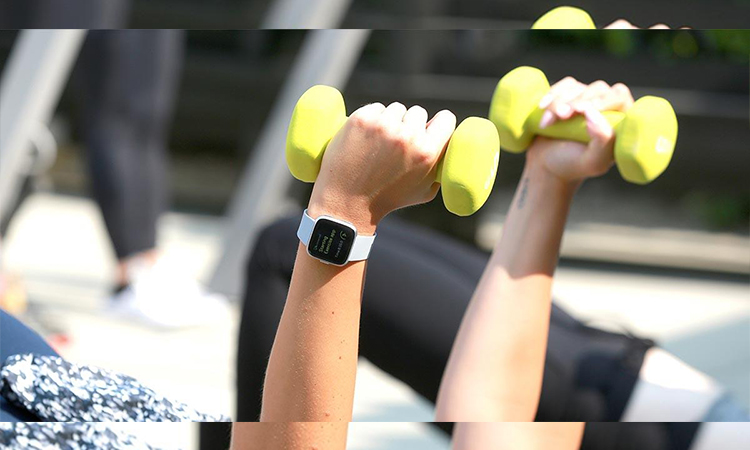
Fitness trackers are wearable technology products that people can wear on the wrist. Initially, people introduced fitness trackers mainly to perform a pedometer function. As people continued researching, they later evolved into a holistic health tracker. They can perform functions including tracking heartbeat and other indicators of the user. The data collected can be viewed through a smartphone application. Some products also allow settings to regularly share information about the user’s metrics with their doctor. Using it can help doctors keep up-to-date on the wearer’s condition and detect any problems early.
Some foreign research institutes have also studied the counting process of some fitness trackers. They checked and monitored fitness tracker data during the count. Researchers ensure the accuracy and reliability of the data they obtain. The test results showed that some trackers performed well indoors. The others were more suitable for outdoor activities. Professional soccer teams in Europe and the United States use miCoach, an activity tracker made by Adidas. They use to quantify players’ physical performance.
3. Smart Clothing
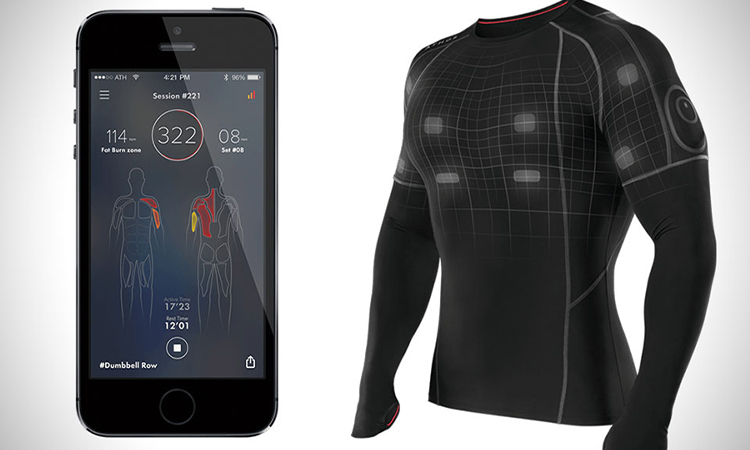
Smart clothing is the integration of electronic devices that measure the health indicators of the wearer. It is commonly referred to as E-Textiles. It provides deeper insight than other products through most contact with the body. It enhances people’s advanced tracking of healthcare and lifestyle improvements. It helps measure health-related information. Such as heart rate, mutual frequency, sleep, etc. Smart clothing also includes smart shoes. Smart shoes allow checking the health status of the user, the number of steps taken, and the fatigue level. It also collects other health indicators of the user and helps to improve their health.
The famous Samsung company has conducted more in-depth and extensive research on smart clothing. It has also filed some potential patents through its research. Assuming Samsung uses its patents to develop commercial products. There could be some even smarter products on the market in the future. It is the smart shirt that can diagnose respiratory diseases and the smart shoes that track running status. Today, consumers can already buy Sirene Socks on the market. It is a smart sock that can detect developing foot ulcers. People can also buy Wearable X’s Nadi X smart pants. It vibrates during the user’s yoga practice to help improve their body shape. Of course, there are many smart clothes with other functions.
The smart clothing industry has become a way for companies to increase brand loyalty. A unique example of what we know about wearable technology is Tommy Hilfiger’s products. Businesses try to add location tracking to their Tommy Jeans Xplore clothing line. This feature allows buyers to detect how often customers wear their clothes. To motivate users to increase their frequency of use, Tommy Hilfiger will reward them with more of its products.
4. Smart Glasses
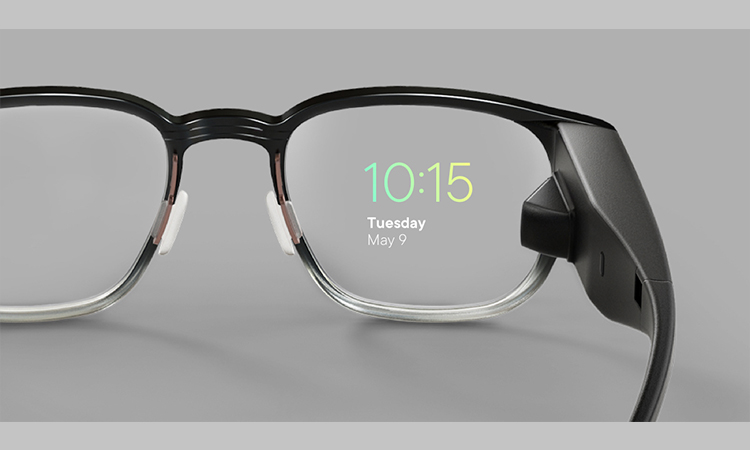
Smart Glasses is a computer glasses that people can wear. It is used to record the information the wearer sees and synchronize the data to the cloud for storage. We commonly see virtual reality (VR), augmented reality (AR), and mixed reality (MR) using a range of wearable smart glasses. They differ slightly in design and function. They can divide all smart glasses into two broad categories. One is to pair it with a smartphone to view smartphone images. The other category is a separate image that requires a wired connection to the source device. Assuming we see two pictures of one eye or both, we can choose a single-purpose smart glass display.
In addition, the AR glasses market has good development prospects in Japan and other Asia-Pacific regions. Two thousand twelve, the first AR glasses – Google Glass – went live. 2013 the advent of mixed reality Hololens caught the attention of the public. 2016 the complete Meta2 was available for pre-order in March 2016. 2016 Snapchat launched fashion glasses and was heavily promoted in November. All of these phenomena indicate that the smart glasses market is accelerating.
5. Head-mounted Displays
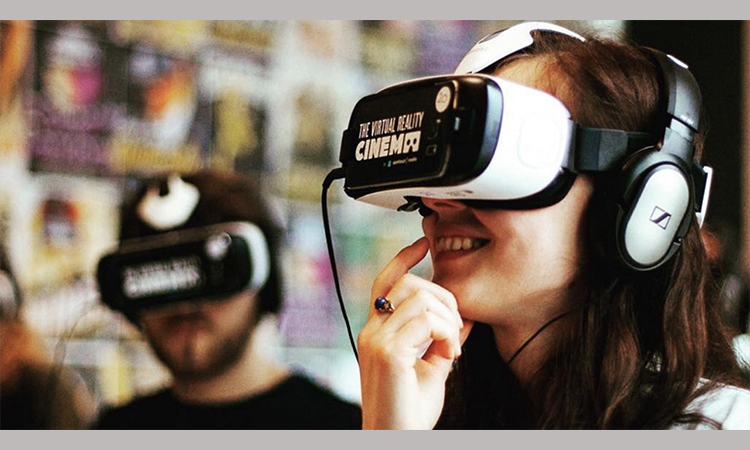
Head-mounted displays are more widely used than other wearable computing devices. HMDs can provide users with more visual and auditory experiences. They are primarily attached to the user’s head and used as a “helmet.” However, the name “helmet” is a relatively traditional name. Its modern model is relatively more like glasses. Most head-mounted displays contain a monitor, lens, and sound system. It is a smart device that allows users to use without looking down at the phone or smartphone display.
Our common HMD can be divided into two types: monocular and binocular. One eye has a display in front of it, and the other doesn’t have a monocular head-mounted display. A binocular head-mounted display has a display and lens in front of each eye. The most typical and best-known monocular display is Google Glass.
The optical head-mounted display (OHMD) is a striking presence. It reflects the projected image. The wearer perceives the image as augmented reality during use.
It can deliver information superimposed on reality through augmented reality (AR). It makes the user experience more realistic. It also allows the user to be fully immersed in virtual reality (VR) environment and unable to extricate themselves. AR HMDs allow the user to engage with digital information. It also allows users to engage with the real-world environment around them.
But not all HMD devices are AR or VR HMDs. for example, one of Vine’s products. It allows users to monitor the video output of devices such as drones in real-time. But this product is a smartwatch.
Entertainment devices such as the HTC Vive, Oculus Rift, and Samsung Gear VR competed to appear. HMD’s consumer market presents a thriving scene.
6. Smart Jewelry

Smart jewelry is a combination of health tracking features integrated into a compact smart wearable device. As of 2021, the most popular smart jewelry is likely to be the smart ring. With brands such as Daura, for example, users can collect their health tracking data through a smart ring worn on their fingers. The user on a smartphone can view the data collected by the ring.
The range of smart jewelry is very wide. We are familiar with bracelets, necklaces, brooches, and fitness jewelry are among them. They will help users track steps, heart rate, and sleep; some will even have call alerts.
Joule sees good potential in the smart jewelry market. It is a smart health tracking device that doubles as an earring backing. According to some foreign media reports, we can know that it will increase the variety of its potential smart jewelry in the short term. It also effectively allows any earring to be added to the list of wearable devices.
7. Implantable
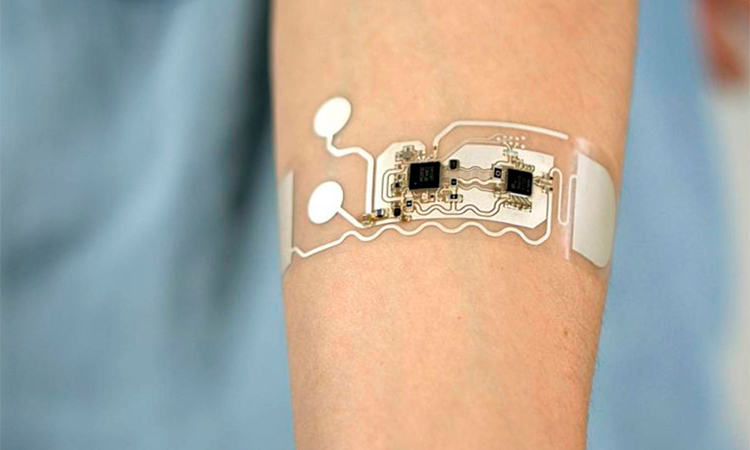
Wearable technology engages the user’s body from the inside rather than the skin. It can transmit the collected data to a smartphone, computer, or another device.
Implantable, wearable devices are mainly used in the medical field. Cyber-pills are also equipped with a microprocessor that can be connected to a smartphone app. By using the implantable wearable, doctors can simplify and speed up their monitoring of patient status. The wearable also speeds up treating patients because the tracking process is in real-time.
One can track their location through the implanted RFID chip. Assuming that the smart tattoo uses NFC technology, it can interact with closer devices. Tattoos on the arm can be unlocked, or enter a password by bringing the arm close to the designated device.
The now-bankrupt company Proteus once made a smart pill with sensors. Patients can easily monitor blood pressure and other health data by taking the pill with an external device.
Some Examples of Wearable Technology Products
Polar Team Pro Men’s Base Layer Smart Shirt comes with integrated sensors. It monitors the user’s heart rate. There is also a pocket on the upper back of the shirt where the user can easily place the tracking sensors. It enables optimal GPS reception.
The SUPA Power Sports Bra has an integrated heart rate sensor. The sensor is made of fabric, and you won’t even feel its presence. The sports bra works with SUPA Reactor’s SUPA.AI app. AI app, which allows users to view relevant data information.
Owlet Smart Sock2 is suitable for use with babies. It uses a clinically proven pulse oximeter to track the user’s heart rate and oxygen levels. Doctors know the condition of the user by observing the light it emits. When it emits green light, everything is fine. The doctor is notified by light and sound if there is a problem.
Cyrcadia Health has developed a smart patch called Cyrcadia Breast Monitor. The patch can detect the early signs of breast cancer. It can also synchronize information to the lab for analysis by researchers.
People are developing smarter tattoos and making them one of the wearable technology products. Smarter tattoos contain flexible electronic sensors inside the body. It can monitor heart and brain activity and sleep disorders.
Over the past few decades, wearable technology products have gained a steady following among consumers. There is one thing that companies need to consider concerning the different types of wearable technology. It is whether or not companies can use these technologies to create a more efficient and connected workplace. By introducing the above seven wearable technology products, we hope to help you with your choice.
Related Reading: Drawbacks and Benefits of Wearable Technology
About Types of Wearable Technology FAQs
-
What is wearable technology, and what are some common examples?
Wearable technology refers to electronic devices worn on the body or integrated into clothing and accessories. Some common examples include smartwatches, fitness trackers, smart glasses, and virtual reality headsets.
-
What are health and fitness wearables, and how do they work?
Health and fitness wearables are devices designed to track physical activity, monitor health metrics, and provide user feedback. They often include sensors that measure parameters such as heart rate, steps taken, and calories burned. Some common health and fitness wearables devices include fitness trackers such as Fitbit and Garmin and smartwatches with health monitoring features.
-
How do smartwatches differ from traditional watches, and what features do they have?
Smartwatches are electronic devices that can run apps, receive notifications, and perform functions beyond simply telling time. They often have touchscreens, voice assistants, and fitness-tracking features. Unlike traditional watches, they require charging and can connect to the internet.
-
What are smart glasses, and how do they enhance the user experience?
Smart glasses are wearable devices that display information directly in the user’s field. They often have features such as augmented reality, voice control, and camera functions. They can enhance the user experience by providing hands-free access to information, navigation, and communication.
-
What are virtual reality headsets, and how do they work?
Virtual reality headsets are wearable devices that immerse users in a computer-generated 3D environment. They typically use screens and sensors to track head movements and provide a realistic visual and auditory experience. They are used for gaming, education, training, and other applications.
-
What are smart clothing and textiles, and how are they used?
Smart clothing and textiles incorporate electronic components such as sensors, LEDs, and conductive fibers. They can be used for various purposes, such as tracking physical activity, monitoring vital signs, and providing user feedback.
-
What are wearables, and how do they improve audio experiences?
Hearables are wearable devices that enhance audio experiences, such as headphones and earbuds. They often have noise cancellation, voice assistants, and fitness tracking features. They can improve audio quality, reduce distractions, and provide personalized feedback.
-
What are smart jewelry and accessories, and how do they work?
Smart jewelry and accessories are wearable devices that perform various functions, such as tracking activity, providing notifications, and controlling other devices. They are often fashionable and can be worn as jewelry or attached to clothing.
-
What are implantable wearables, and what are some of their applications?
Implantable wearables are electronic devices implanted under the skin or inside the body for various medical applications. They can monitor vital signs, deliver medication, and provide feedback to doctors and patients. Common examples of implantable, wearable devices include pacemakers, insulin pumps, and neural implants.







